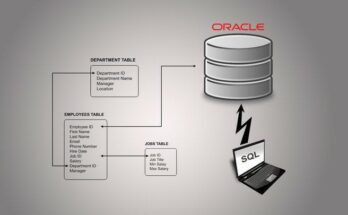In today’s fast-paced business environment, efficiency and productivity are more than just buzzwords – they are the foundation on which competitive advantage is built. As office tasks become increasingly complex and data-driven, the need for automation and streamlined processes has never been more pressing. Get started with Python, a powerful programming language that is both versatile and easy to use, making it the perfect tool to improve office productivity.
Python’s simplicity allows even people with little programming experience to automate repetitive tasks, analyze data, and integrate different programming platforms. Python scripts allow businesses and individuals to free up valuable time, reduce human error, and focus on strategic activities that deliver real value.
“In the realm of office productivity, Python is not just a tool; it’s a game-changer.”
This introductory chapter sets the stage for a deep dive into how Python can transform office productivity, outlining the journey from basic scripts to advanced automation solutions that can revolutionize the way we work.
Getting Started with Python for Office Productivity
Introduction to Python programming
Python is celebrated for its readability and straightforward syntax, which closely mirrors human language. This makes it an excellent first programming language and a powerful tool in the arsenal of experienced developers alike. For office productivity, Python’s simplicity means that even complex tasks can be automated with relatively short and understandable scripts.
Setting up the Python environment for office productivity tasks
Before diving into scripting, it’s essential to set up a Python environment tailored for office productivity. This involves installing Python itself, choosing an integrated development environment (IDE) that suits your workflow, and installing the necessary libraries that will be used to automate office tasks.
Basic Python syntax and concepts essential for scripting
Understanding basic Python syntax and concepts is crucial for creating effective scripts. This section would cover variables, data types, control flow (if statements, loops), functions, and error handling. Mastery of these basics lays the groundwork for more complex automation tasks.
Fundamentals of Office Automation with Python
Automation can turn hours of manual work into a task that takes a few seconds. Python scripts can handle data entry, manage files and directories, send out emails, and even scrape information from the web.
Understanding office tasks suitable for automation
Identify repetitive and time-consuming tasks that are ripe for automation. These might include data entry, report generation, email management, and routine file organization. The goal is to pinpoint areas where Python can have the most immediate impact on productivity.
Overview of Python libraries relevant to office productivity
Libraries extend Python’s functionality, allowing us to interact with spreadsheets, documents, emails, and more. Libraries like openpyxl for Excel, python-docx for Word, and PyPDF2 for PDF manipulation are game-changers, enabling Python scripts to do the heavy lifting in office tasks.
Basic scripts to automate simple tasks
Starting with scripts that automate simple tasks lays a solid foundation. For instance, a script to batch convert DOCX files to PDF or to summarize Excel file data can save countless hours over time. These initial scripts also serve as building blocks for more complex automation solutions.
Automating Excel with Python
Excel is a cornerstone of office productivity, used for everything from simple data entry to complex financial modeling. Python can automate a vast array of Excel tasks, making it an invaluable tool for anyone looking to streamline their workflow.
Detailed guide on using Python to automate Excel tasks
This section would explore how to read from and write to Excel files, manipulate data, and perform calculations automatically. By leveraging libraries like openpyxl or pandas, users can automate tasks ranging from simple data entry to complex report generation.
Case studies: Automating report generation, data analysis, and spreadsheet management
Real-world examples help illustrate Python’s potential to transform Excel tasks. Case studies might include automating the generation of monthly reports, analyzing sales data to extract insights, or managing inventory spreadsheets.
Best practices for handling Excel files and data with Python
Working with Excel files efficiently requires understanding best practices in data handling and script optimization. This includes managing large datasets, ensuring data integrity, and writing reusable code.
Read Also: Excel Dashboard Design: Creating Informative Visuals
Conclusion
Python’s versatility and accessibility make it an unparalleled tool for enhancing office productivity. From automating mundane tasks to integrating different software platforms, the potential for efficiency gains is limited only by one’s imagination. As we’ve explored throughout this book, the key to unlocking Python’s full potential lies in understanding the basics, identifying opportunities for automation, and continually refining and expanding your scripts to meet the evolving needs of the office environment.
By embracing Python, businesses and individuals can not only boost productivity but also foster a culture of innovation and continuous improvement. The future of office productivity is one where manual, time-consuming tasks are a thing of the past, and Python is at the forefront of this transformation.
FAQs
Q: Do I need to be a programmer to automate office tasks with Python? A: No, you don’t need to be a programmer. Python’s simplicity makes it accessible for individuals with minimal coding experience. Starting with simple scripts and gradually building up your skills is a practical approach to automating office tasks.
Q: Can Python automation work with both Microsoft Office and Google Workspace? A: Yes, Python can automate tasks in both Microsoft Office and Google Workspace. While the libraries and APIs used may differ, the underlying principles of automation remain the same.
Q: How can I ensure my Python scripts are secure? A: Security is paramount, especially when dealing with sensitive office data. Always follow best practices, such as using secure APIs, avoiding hard-coded credentials, and regularly reviewing and updating your scripts for potential vulnerabilities.




